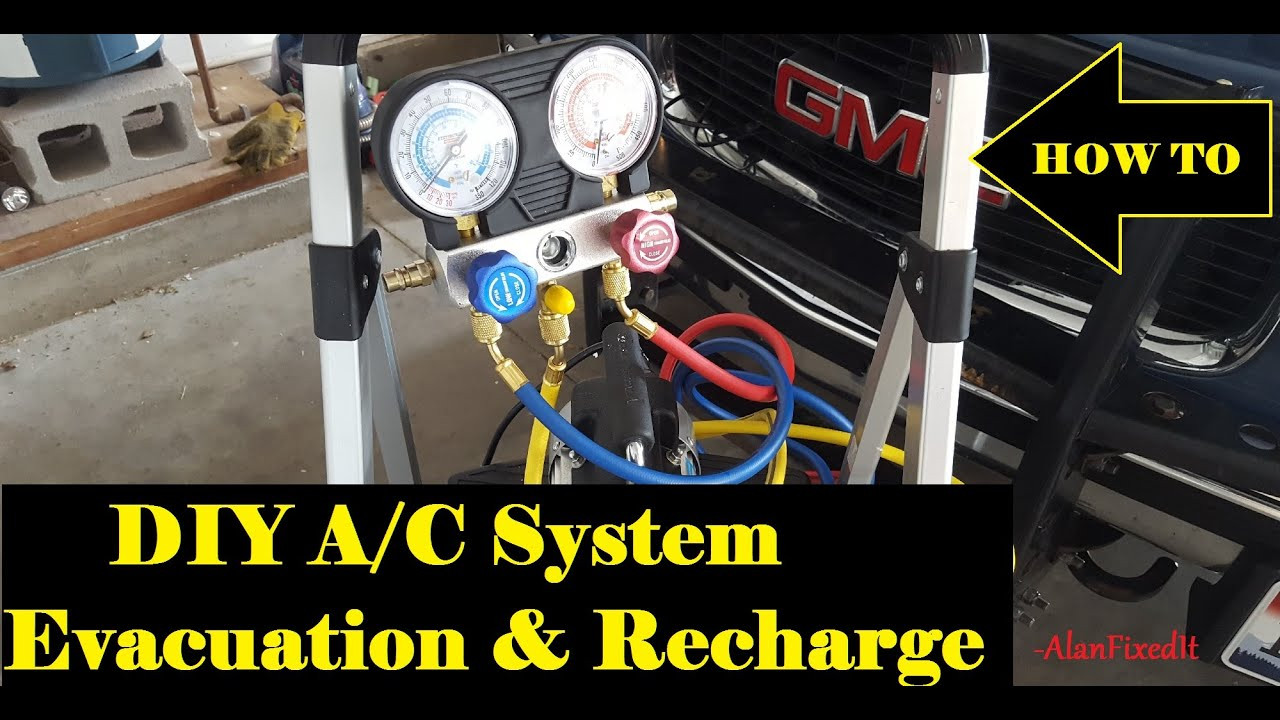Imagine stepping into your home on a scorching summer day and being greeted by a blast of refreshing, cool air. Your air conditioner has been working overtime, diligently keeping you comfortable in the face of relentless heat. But even the most steadfast of AC units requires periodic attention to maintain optimal performance. One crucial task in this maintenance regimen is recharging the refrigerant, the lifeblood of your cooling system. In this comprehensive guide, we will delve into the intricacies of recharging your home AC system, empowering you with the knowledge and skills to revive its cooling prowess.

Image: keepitportable.com
The Refrigerant’s Vital Role: Ensuring Air-Chilling Efficiency
Refrigerant is the key player in the cooling process. It circulates through your AC system, absorbing heat from the indoor air and releasing it outdoors. As this refrigerant circulates, it undergoes a phase change, transitioning between liquid and gas states. This phase change is the driving force behind the cooling process and ensures that your indoor environment remains at a comfortable temperature. However, over time, refrigerant levels can diminish due to leaks or other factors, resulting in decreased cooling efficiency and higher energy consumption. To ensure seamless system operation, timely recharging of the refrigerant is essential.
Assembling the Arsenal: Essential Tools and Equipment
Before embarking on the refrigerant recharge mission, it’s crucial to gather the necessary tools and equipment. Here’s your essential checklist:
-
Refrigerant cylinder: Ensure you have the correct type and quantity of refrigerant for your AC system.
-
Manifold gauge set: This device allows you to monitor the refrigerant pressure and temperature.
-
Vacuum pump: Used to evacuate air and moisture from the AC system before recharging.
-
Refrigerant leak detector: To locate any potential leaks in the system.
-
Safety glasses and work gloves: Don’t forget to prioritize safety by wearing protective gear.
Step-by-Step Guide: A Methodical Approach to Recharging Success
Now that you have the tools and knowledge at your disposal, let’s dive into the step-by-step process of recharging your home AC system:
-
Safety First: Before commencing any work, power down the AC unit at the breaker. Your safety is paramount.
-
Leak Detection: Don’t skip this crucial step. Use the refrigerant leak detector to scan your system and identify any leaks. If leaks are detected, repairs must be made before proceeding further.
-
Evacuating the System: Connect the vacuum pump and evacuate the system for approximately 30 minutes. This process removes air and moisture, creating a vacuum within the system.
-
Charging the System: Connect the manifold gauge set and refrigerant cylinder. Gradually open the refrigerant valve and monitor the pressure and temperature gauges. Slowly introduce refrigerant into the system until the desired charge level is reached.
-
Completing the Process: Once the system is fully charged, close the refrigerant valve and vacuum pump. Restore power to the AC unit and run it for approximately 30 minutes. Monitor the refrigerant pressure and temperature to ensure proper operation.

Image: thesimplecraft.com
Troubleshooting Tips: Navigating Common Pitfalls
-
Insufficient Cooling: If the AC unit fails to cool effectively after recharging, there may be an underlying issue. Check for refrigerant leaks, faulty components, or airflow restrictions.
-
Overcharging: Overcharging the system can lead to excessive pressure and damage to the compressor. Be cautious not to exceed the specified refrigerant charge amount.
-
Compressor Failure: A non-functioning compressor will prevent the AC system from cooling. If you suspect compressor failure, seek professional assistance.
How To Recharge Your Home Ac System
Conclusion: Empowering Homeowners with Confidence and Comfort
Recharging your home AC system is a critical maintenance task that ensures optimal performance and comfort during the scorching summer months. By following the steps outlined in this guide, you can confidently recharge your AC system and restore its cooling capabilities. Remember, if you encounter any difficulties or suspect a more serious issue, don’t hesitate to consult with a qualified HVAC professional. With the knowledge and skills gained from this article, you can effectively maintain your home AC system, ensuring a cool and comfortable indoor environment for you and your loved ones.


/GettyImages-1303637-two-way-mirror-57126b585f9b588cc2ed8a7b-5b8ef296c9e77c0050809a9a.jpg?w=740&resize=740,414&ssl=1)


